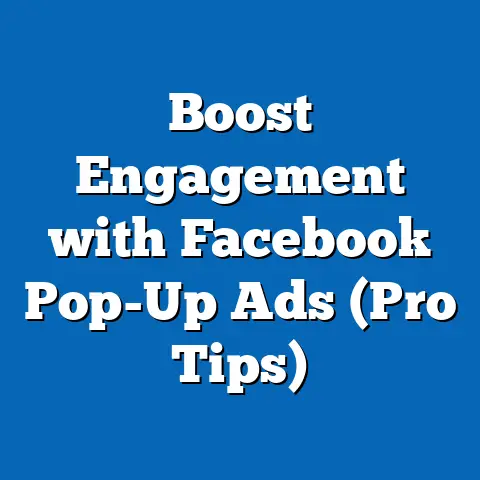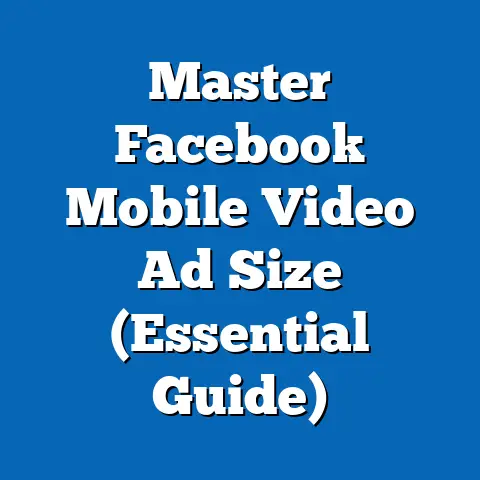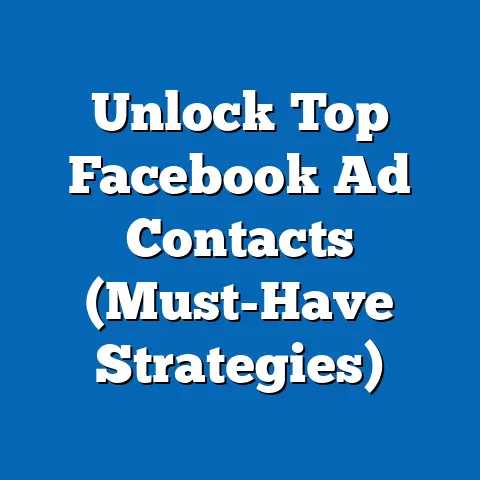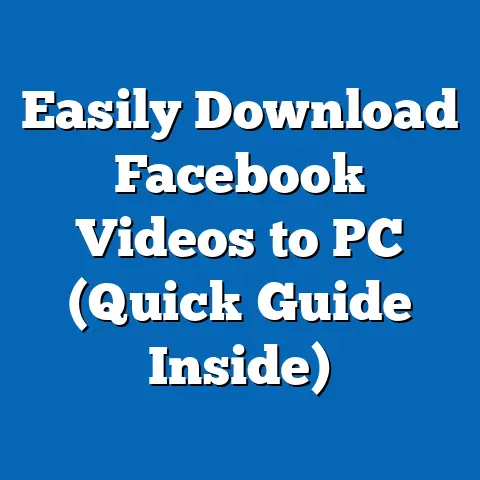Domine a Segmentação de Público no Facebook (Técnicas Avançadas)
The digital marketing landscape is constantly evolving, and in the current climate, generic advertising is simply not enough to cut through the noise. As businesses, we’re all vying for the attention of the same potential customers, and to succeed, we need to be laser-focused on reaching the right people with the right message at the right time. That’s where audience segmentation comes in, and it’s become an absolute necessity for achieving any meaningful return on investment (ROI) in Facebook advertising.
I remember back when I first started running Facebook ads, I was basically throwing spaghetti at the wall. I had a vague idea of who my target audience was, but my targeting was broad, my messaging was generic, and my results were, well, underwhelming. It wasn’t until I truly understood the power of audience segmentation that I started to see a real shift in my campaign performance.
Today, the rise of personalized advertising has completely reshaped consumer expectations. People are no longer willing to tolerate irrelevant ads that interrupt their online experience. They expect to see ads that are tailored to their specific interests, needs, and preferences. This means that as marketers, we need to adapt to these changes by mastering advanced segmentation techniques to stay competitive. We need to move beyond basic demographic targeting and dive deep into the data to understand our audiences on a much more granular level.
Understanding Audience Segmentation
Audience segmentation is the process of dividing a broad target audience into smaller, more specific groups based on shared characteristics. These characteristics can include demographics (age, gender, location), geographic location (country, city, region), psychographics (interests, values, lifestyle), and behaviors (purchase history, website activity, engagement with content).
Why is audience segmentation so important? Because it allows us to:
- Deliver more relevant ads: By targeting specific segments with tailored messaging, we can increase engagement and conversion rates.
- Improve ad spend efficiency: We can avoid wasting money on showing ads to people who are unlikely to be interested in our products or services.
- Personalize the customer experience: Segmentation allows us to create more personalized experiences that resonate with individual customers and build stronger relationships.
- Increase ROI: By optimizing our campaigns for specific segments, we can significantly improve our return on investment.
Facebook’s advertising system is a game-changer for advertisers because it allows for incredibly intricate segmentation. The platform collects vast amounts of data on its users, including their demographics, interests, behaviors, and connections. This data allows us to create highly targeted audiences that are much more likely to be receptive to our ads.
Think of it like this: instead of broadcasting a message to everyone, you’re whispering a personalized message directly into the ear of someone who is already interested in what you have to say.
Takeaway: Audience segmentation is the foundation of successful Facebook advertising. By understanding the different types of segmentation and leveraging Facebook’s powerful targeting capabilities, you can create more relevant, efficient, and effective campaigns.
The Importance of Data Analytics in Segmentation
Data analytics is the lifeblood of effective audience segmentation. Without data, we’re just guessing. We need to use data to understand our target audience, identify their needs and pain points, and tailor our messaging to resonate with them.
Facebook Ads Manager provides a wealth of tools and metrics that can help us analyze audience behaviors. Some of the key metrics to pay attention to include:
- Demographics: Understanding the age, gender, location, and other demographic characteristics of your audience can help you refine your targeting and messaging.
- Interests: Facebook’s interest targeting allows you to reach people based on their stated interests, which can be a powerful way to connect with potential customers.
- Behaviors: Analyzing the behaviors of your audience, such as their purchase history, website activity, and engagement with content, can provide valuable insights into their needs and preferences.
- Website Traffic: Integrating the Facebook Pixel on your website allows you to track user behavior and create custom audiences based on specific actions they take on your site.
- Engagement: Monitoring engagement metrics like likes, comments, shares, and click-through rates can help you understand which ads are resonating with your audience and which ones need improvement.
A/B testing is another crucial component of audience segmentation strategies. By testing different ad creatives, targeting options, and bidding strategies, we can identify what works best for each segment and optimize our campaigns accordingly.
For example, I once ran an A/B test where I targeted two different audiences with the same ad creative. Audience A was a broad audience based on interests, while Audience B was a custom audience based on website visitors. The results were striking. Audience B, the custom audience, had a significantly higher click-through rate and conversion rate than Audience A. This showed me that retargeting website visitors with personalized ads was a much more effective strategy than targeting a broad audience based on interests.
Takeaway: Data analytics and A/B testing are essential for refining your audience segments and optimizing your Facebook ad campaigns. By constantly analyzing your data and testing different approaches, you can identify what works best for each segment and improve your ROI.
Advanced Techniques for Audience Segmentation
Now that we’ve covered the basics of audience segmentation and the importance of data analytics, let’s dive into some advanced techniques that can take your Facebook advertising to the next level.
Custom Audiences
Custom Audiences allow you to target specific groups of people based on data you already have. This data can come from a variety of sources, including:
- CRM Data: You can upload your customer list to Facebook and target your existing customers with personalized ads.
- Website Traffic: By installing the Facebook Pixel on your website, you can track user behavior and create custom audiences based on specific actions they take on your site. For instance, you can create audiences of people who visited a specific product page, added items to their cart, or completed a purchase.
- Engagement on Facebook: You can create custom audiences based on people who have engaged with your Facebook page or ads, such as those who have liked your page, commented on a post, or watched a video.
- Mobile App Activity: If you have a mobile app, you can create custom audiences based on user activity within the app.
Creating custom audiences is a powerful way to reach people who are already familiar with your brand and are more likely to be interested in your products or services.
Lookalike Audiences
Lookalike Audiences allow you to expand your reach to potential customers who share similar characteristics with your existing customers. You start by creating a source audience, which can be a custom audience or a Facebook page audience. Facebook then analyzes the characteristics of the people in your source audience and identifies other users who share similar traits.
Lookalike Audiences are a great way to reach new customers who are likely to be interested in your products or services but may not have heard of your brand before.
When creating a Lookalike Audience, you can specify the size of the audience you want to target. A smaller audience will be more closely matched to your source audience, while a larger audience will be less closely matched but will have a wider reach. I generally recommend starting with a smaller audience and gradually increasing the size as you optimize your campaign.
Dynamic Ads
Dynamic Ads are a powerful way to retarget website visitors with personalized ads that feature the products they viewed on your site. These ads are automatically generated based on the products in your product catalog and the actions users have taken on your website.
For example, if someone visits your website and views a specific pair of shoes, they may later see a dynamic ad on Facebook featuring those exact shoes. This type of personalized retargeting can be highly effective in driving conversions.
Interest Targeting
Facebook’s interest targeting allows you to reach people based on their stated interests, which can be a powerful way to connect with potential customers. You can target people based on a wide range of interests, including hobbies, sports, entertainment, and professional interests.
When using interest targeting, it’s important to be as specific as possible. Instead of targeting a broad interest like “sports,” try targeting a more specific interest like “basketball” or “soccer.” This will help you reach people who are more likely to be interested in your products or services.
Behavioral Targeting
Behavioral Targeting allows you to reach users based on their past actions and activities online, including shopping behaviors and device usage. Facebook collects a vast amount of data on user behavior, which allows you to target people based on their purchase history, device usage, travel habits, and more.
For example, you can target people who have recently purchased a product in a specific category, or you can target people who are using a specific type of device. This type of targeting can be highly effective in reaching people who are actively looking for products or services like yours.
Takeaway: These advanced techniques can help you create highly targeted Facebook ad campaigns that resonate with your ideal customers and drive meaningful results for your business. By combining these techniques with data analytics and A/B testing, you can continuously optimize your campaigns and improve your ROI.
Case Studies and Real-World Applications
Let’s take a look at a few case studies of businesses that have successfully implemented advanced audience segmentation strategies on Facebook.
- E-commerce Brand: An e-commerce brand selling fitness apparel used custom audiences to target their existing customers with personalized ads featuring new products. They also used lookalike audiences to reach potential customers who shared similar characteristics with their existing customers. As a result, they saw a 30% increase in sales and a 20% reduction in cost per acquisition.
- Local Restaurant: A local restaurant used website traffic custom audiences to retarget people who had visited their website but hadn’t made a reservation. They created personalized ads featuring their menu and special offers. This resulted in a 15% increase in reservations.
- Software Company: A software company used behavioral targeting to reach people who were using a competitor’s product. They created personalized ads highlighting the benefits of their software and offering a free trial. This resulted in a 25% increase in leads.
These case studies demonstrate the power of advanced audience segmentation techniques in driving results for businesses of all sizes. The key takeaways from these case studies are:
- Know your audience: Before you can segment your audience, you need to understand their needs, pain points, and preferences.
- Use data to inform your decisions: Data analytics and A/B testing are essential for refining your audience segments and optimizing your campaigns.
- Personalize your messaging: Tailor your ad creatives and messaging to resonate with each segment.
- Continuously optimize: Facebook advertising is an ongoing process. You need to continuously analyze your data and test different approaches to improve your ROI.
Takeaway: These case studies illustrate the real-world benefits of advanced audience segmentation. By understanding your audience, using data to inform your decisions, personalizing your messaging, and continuously optimizing your campaigns, you can achieve significant results with Facebook advertising.
Conclusion
Mastering advanced audience segmentation techniques on Facebook is crucial for achieving marketing success in today’s competitive digital landscape. By understanding the different types of segmentation, leveraging Facebook’s powerful targeting capabilities, and continuously analyzing your data, you can create highly targeted campaigns that resonate with your ideal customers and drive meaningful results for your business.
As the digital landscape continues to evolve, staying ahead of the curve with targeted advertising strategies is essential. Embrace the power of audience segmentation, and you’ll be well on your way to achieving your marketing goals and driving sustainable growth for your business.
Remember, it’s not about reaching everyone; it’s about reaching the right people. And with the right audience segmentation strategies, you can do just that.






